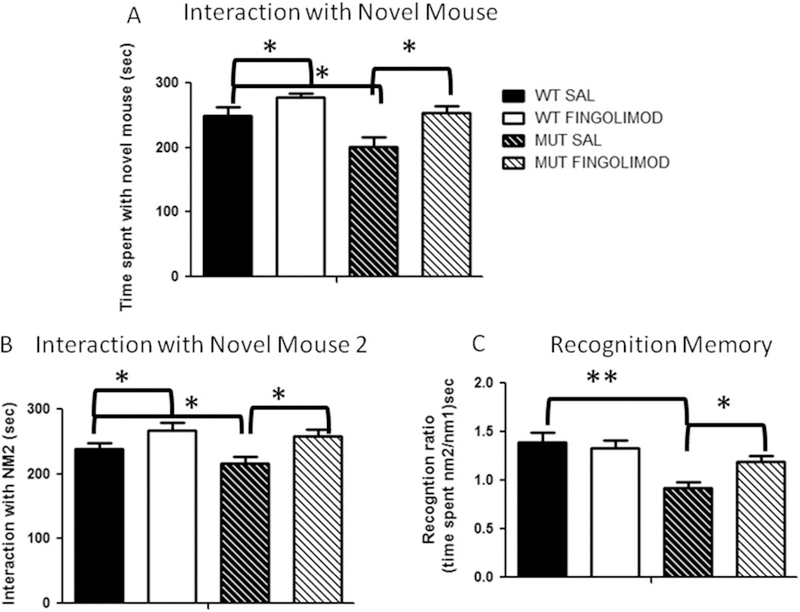Fig. 1.
A: Sociability of dysbindin-1 MUT mice as measured by the social choice/approach task. Relative to WT mice (n = 12), dysbindin-1 MUT mice (n = 12) exhibited lower interaction times with NM1 (★P < 0.0109). After fingolimod treatment, dysbindin-1 MUT mice (n = 13) showed normalized levels of interaction with NM1; the interaction is significantly greater compared with saline-treated counterparts (n = 12; ★P < 0.018). B: Assessing preference for social novelty in dysbindin-1 MUT mice. Given the choice between a past and a novel social interaction, dysbindin-1 MUT mice (n = 9) exhibited significantly lower interaction times with NM2 (★P = 0.0104) compared with WT mice (n = 9). After fingolimod treatment, dysbindin-1 MUT mice (n = 10) showed normalized levels of interaction with NM2, significantly greater compared with saline treatment (n = 9; ★P = 0.0173). C: Recognition ratio as a measure of memory function in dysbindin-1 MUT mice. WT mice showed no deficits in recognition memory when given the choice between a past and a novel social interaction, as measured by the recognition ratio. However, relative to WT mice, dysbindin-1 MUT mice exhibited significant reductions (★★P < 0.001) in recognition. After treatment with fingolimod, dysbindin-1 MUT mice showed significant improvement in recognition ratio (★P < 0.05) compared with the saline-treatment group. SAL, saline.

